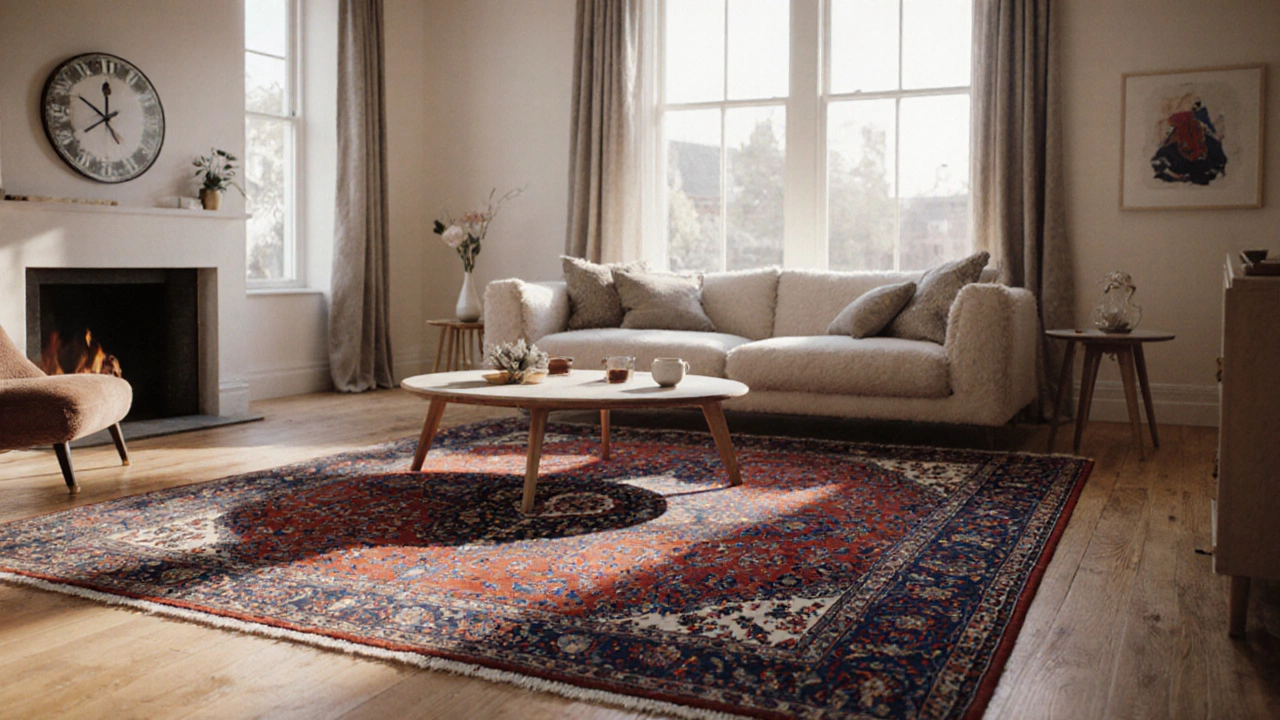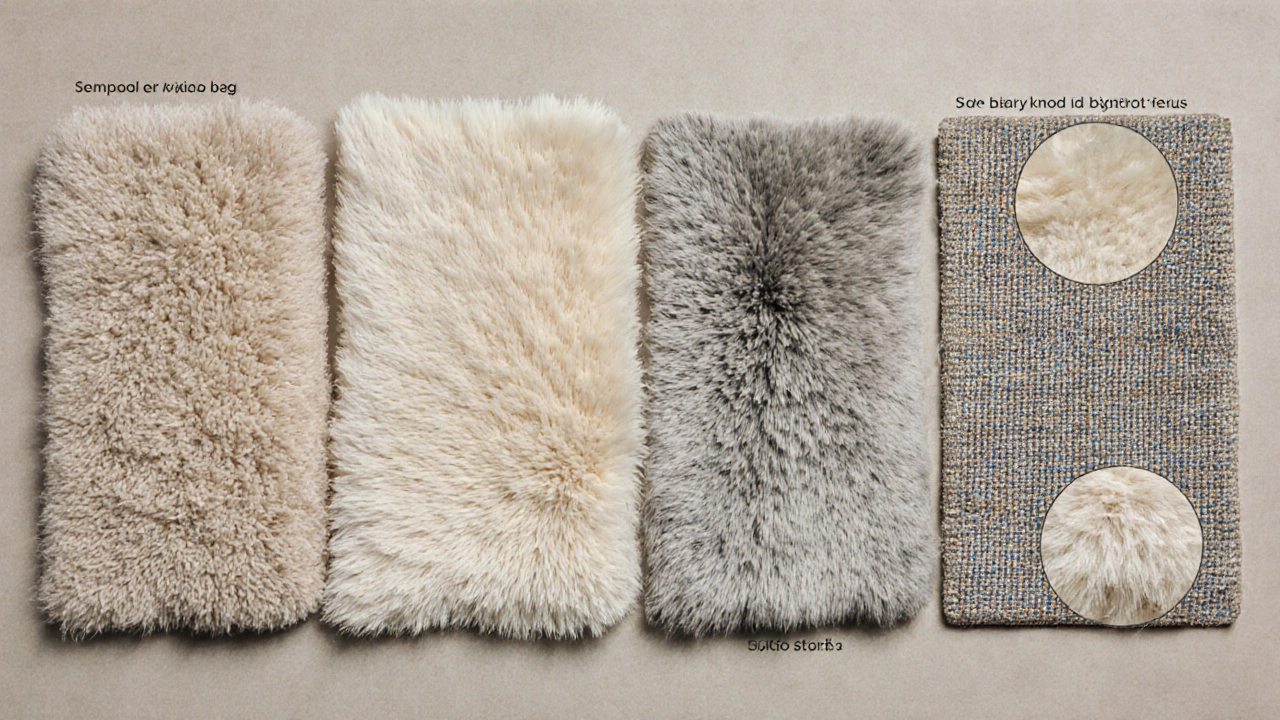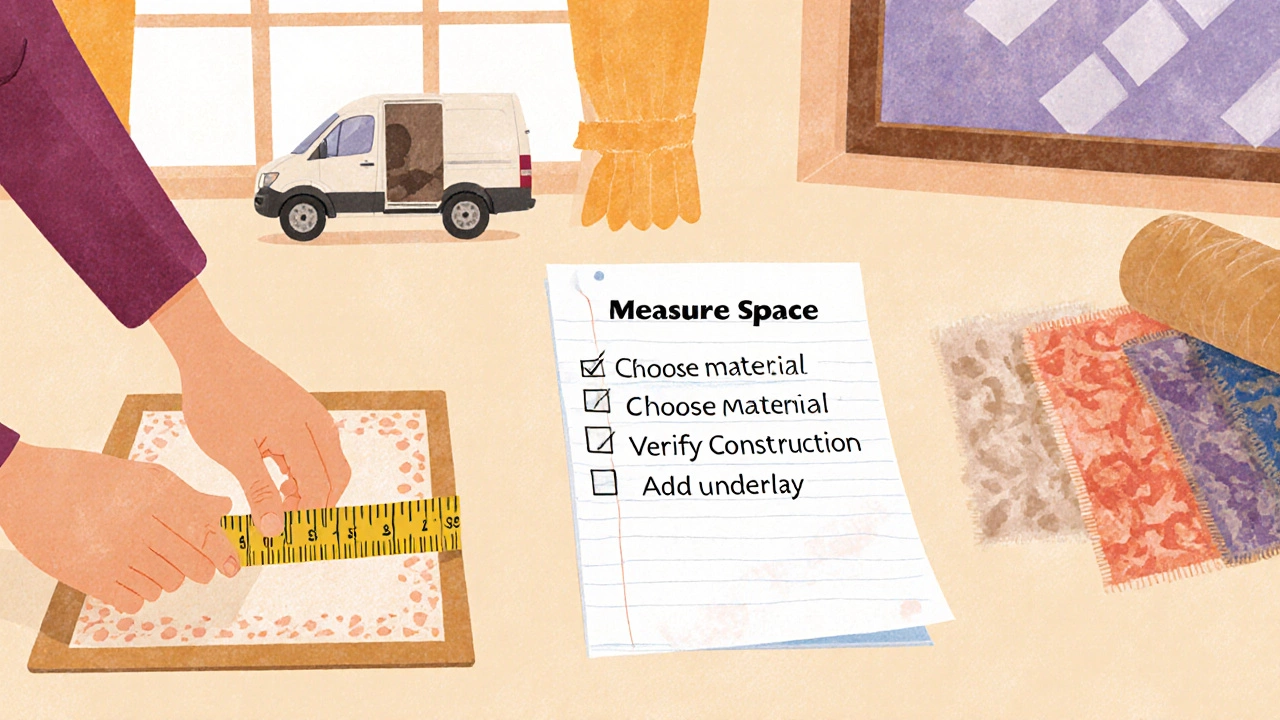High Quality Rug Prices: What to Expect in 2025
 Oct, 25 2025
Oct, 25 2025
Rug Cost Calculator
Calculate Your Rug Cost
Estimated Cost
Enter room dimensions and select options to calculate cost
If you’ve ever wondered high quality rug cost, you’re not alone. A great rug can tie a room together, but the price tag often feels like a mystery. This guide breaks down what makes a rug “high‑quality,” how each factor shapes the price, and what you should budget for in 2025.
What makes a rug high‑quality?
When we talk about a high quality rug is a floor covering crafted from superior materials, built with meticulous construction methods, and designed to last decades while retaining its visual appeal. It isn’t just about brand names; it’s the combination of material, weave, design, and origin that sets a premium rug apart from a mass‑produced floor mat.
Key cost drivers
Understanding where the money goes helps you compare options without feeling overwhelmed.
- Material - Natural fibers such as wool, silk, mohair, and high‑grade nylon command higher prices than synthetic blends.
- Construction method - Hand‑knotted or hand‑tufted rugs require hours of skilled labor, whereas machine‑woven pieces are cheaper to produce.
- Size and shape - Larger rugs need more material and labor; custom shapes (round, oval) add extra cutting and finishing costs.
- Design complexity - Intricate patterns, especially traditional motifs, increase labor time and material waste.
- Brand and origin - Rugs made in renowned weaving regions (e.g., Persia, Kashmir) often carry a heritage premium.
Typical price ranges by material
Below is a snapshot of what you’ll see on the market for genuine, high‑quality pieces.
| Material | Typical price per square metre | Durability (years) | Feel |
|---|---|---|---|
| Wool rug | $300-$900 | 15-25 | Soft, resilient |
| Silk rug | $1,200-$5,000 | 10-15 | Luxuriously smooth, delicate |
| Mohair rug | $800-$2,200 | 20-30 | Elegant sheen, very soft |
| Nylon rug | $250-$700 | 12-20 | Sturdy, fade‑resistant |
| Hand‑knotted rug | $1,500-$10,000+ | 25-50 | Rich texture, heirloom quality |

How to budget for a premium rug
Once you know the material range, set a realistic ceiling.
- Determine the square metre area you need. Measure length and width, then multiply; add 10 % for waste if you’re ordering a custom shape.
- Pick a material that matches foot traffic. High‑traffic rooms (living rooms, hallways) benefit from wool or nylon; low‑traffic spaces (bedrooms, study) can justify silk or mohair.
- Include ancillary costs: underlay (typically $30-$80 per sqm), delivery ($100-$300 depending on distance), and professional cleaning (annual $80-$150).
- Consider timing. End‑of‑season sales in New Zealand often shave 10-20 % off retail prices.
- If the budget feels tight, explore reputable outlet stores or reputable second‑hand dealers-many hand‑knotted rugs are gently used and priced 30 % lower than new.
Where to shop in 2025
In Auckland, a handful of retailers have earned a reputation for offering authentic high‑quality pieces.
- Rug & Co. - Specialises in hand‑knotted Persian and Turkish rugs, offers a 30‑day return on all floorings.
- Kiwi Woolworks - Focuses on locally sourced New Zealand wool, perfect for eco‑conscious shoppers.
- Silk House - Carries a curated selection of silk rugs sourced directly from Iran, with certifications for ethical production.
- Online marketplaces - Platforms such as Etsy and Wayfair list certified sellers; always request material certificates and a detailed weave description.

Common pitfalls and how to avoid overpaying
Even seasoned shoppers can fall into traps.
- Assuming size equals price. A small silk runner can cost more than a large wool area rug. Compare price per square metre, not total price.
- Skipping the material tag. Synthetic “wool‑look” rugs may feel similar but lack durability, leading to replacement costs.
- Ignoring the return policy. A rug may look different once laid out. A clear return window saves frustration.
- Not checking the weave. Hand‑knotted rugs have clear knot counts; a low knot count may indicate lower quality.
Quick checklist before you buy
- Measure the space and add 10 % for waste.
- Choose material based on traffic and desired feel.
- Verify the construction method (hand‑knotted, hand‑tufted, machine‑woven).
- Ask for a material certificate or origin proof.
- Factor in underlay, delivery, and cleaning costs.
- Confirm return policy and warranty length.
What is the average cost of a wool rug per square metre?
In 2025, a high‑quality wool rug typically ranges from $300 to $900 per square metre, depending on knot density and origin.
Do silk rugs require special care?
Yes. Silk is delicate and should be professionally cleaned every 12‑18 months. Avoid direct sunlight to prevent fading.
How can I tell if a rug is hand‑knotted?
Look for a clear knot count on the back, a tight, even weave, and a slight “pop” when you run your fingers across the surface.
Is it worth paying more for a rug made in New Zealand?
New Zealand wool rugs support local farms and often feature sustainable processing. While they may cost 10‑15 % more, the environmental benefit and craftsmanship can justify the price.
Can I use a rug under a dining table?
Absolutely. Choose a low‑pile material like nylon or flatweave for easy chair movement, and add a non‑slip underlay to protect both rug and floor.